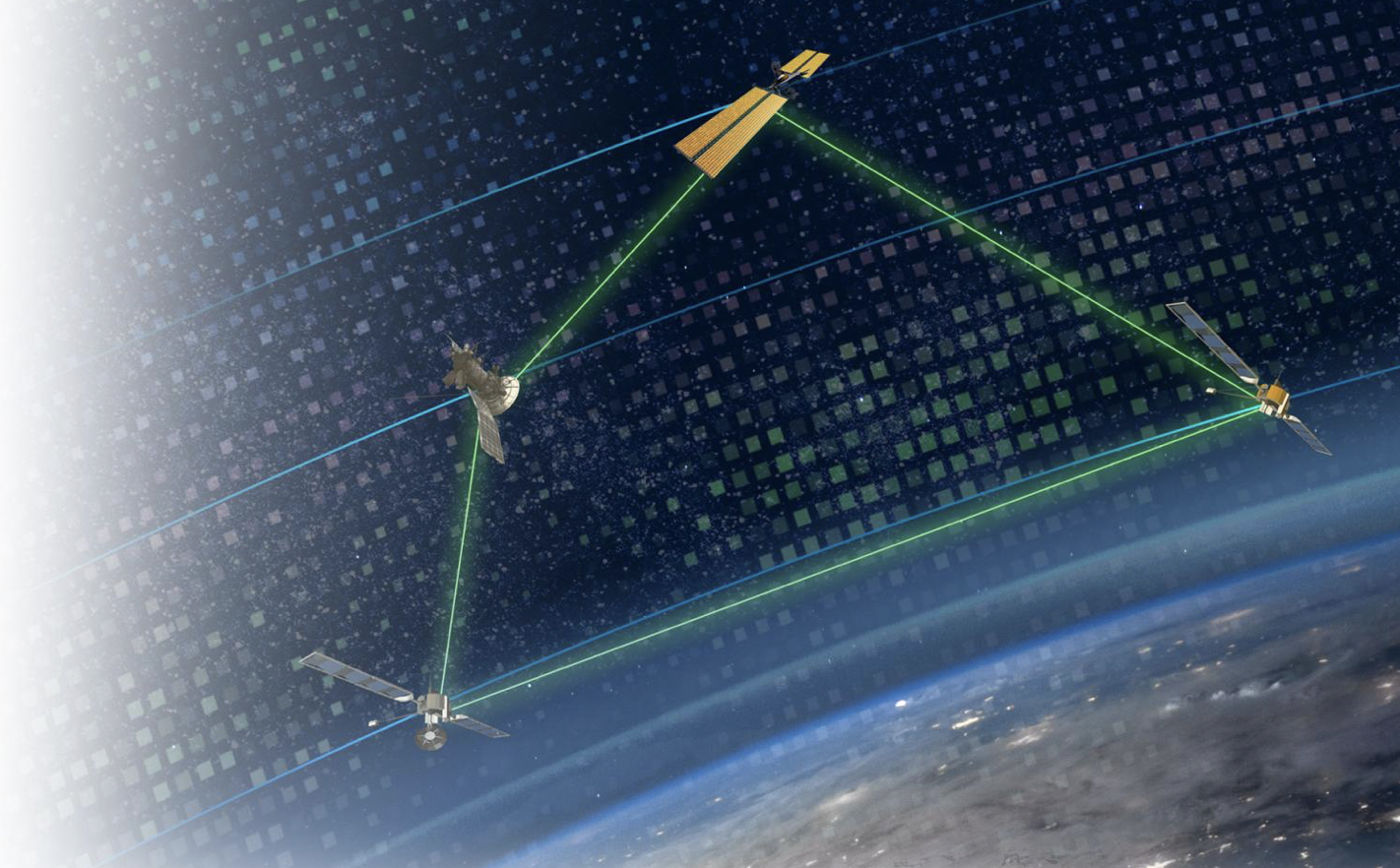Products You May Like
WASHINGTON — CACI International’s optical communication terminal passed initial ground tests required to compete for Space Development Agency satellite contracts, the company announced Sept. 18.
CACI, a defense contractor based in Reston, Virginia, said its optical terminal successfully completed an interoperability test, bringing it closer to meeting technical requirements set by the Space Development Agency (SDA) for its constellation of military satellites in low Earth orbit.
SDA, an agency under the U.S. Space Force, plans to deploy a layered network of satellites. It includes a Transport Layer of interconnected communications satellites that will transmit data collected by a Tracking Layer of missile-detection sensor satellites.
Each satellite will have at least two or more optical communications terminals, or laser links, so they can talk to other satellites, airplanes, ships and ground stations.
CACI is one of several manufacturers pursuing SDA contracts. Others include Mynaric, Tesat and Skyloom.
All optical terminals riding on SDA satellites have to comply with a common standard to ensure spacecraft made by different manufacturers can transmit data in orbit across the entire network.
Laser terminal providers are selected by the satellite manufacturers that win SDA contracts for portions — or “tranches” — of the constellation.
Tests at Naval Research Laboratory
CACI makes laser communications systems for NASA and intelligence agencies. It expanded its product line of lower cost optical terminals after it acquired SA Photonics in 2021.
In the recent test, CACI’ terminal was able to establish a data communication link with a reference modem built by the Naval Research Laboratory for the SDA program.
CACI tested its terminal as a supplier of Lockheed Martin, which was selected to build 42 Tranche 1 Transport Layer satellites that SDA plans to launch in late 2024. Lockheed Martin also is using Tesat terminals for its Tranche 1 satellites.
To fly on Tranche 1 satellites, CACI’s optical terminal also will have to pass a more difficult interoperability test to demonstrate it can exchange data with another vendor’s terminal. None of SDA’s current suppliers have yet cleared that hurdle.
“We were the first to show a fully compliant terminal against the NRL reference modem,” said Todd Probert, president of national security and innovative solutions at CACI.
“This test proves that our modem works,” Probert told SpaceNews.
He said two CACI terminals successfully exchanged data in orbit last year as part of the Defense Advanced Research Projects Agency’s Mandrake experiment. DARPA also used CACI terminals on four Blackjack satellites it recently launched to low Earth orbit. The agency has not disclosed any test results yet from the Blackjack experiment.
Probert said CACI is ramping production of terminals at a new factory in Orlando, Florida.
Interoperability challenge for SDA
Frank Turner, technical director of SDA, said at a recent industry conference that the agency invested in the optical communications testing facility at NRL to ensure that laser terminals are interoperable before they are launched to orbit.
Commercial constellations use satellites made by a single manufacturer, whereas SDA needed to figure out how to bring together a network of satellites from multiple vendors. “That’s why we built the optical interoperability testbed,” said Turner. “NRL built it, we financed it, we oversaw it.”
It’s important for SDA to have a diverse pool of suppliers, he said. “We don’t want a single company to own this market. We want a marketplace where there are multiple sources.”
An industry expert familiar with SDA satellite requirements said one of the challenges for the agency is to make sure that vendors understand the optical communications standards and implement them correctly.
The validation done by NRL on the ground is helpful, said the expert, but the real test will come when terminals on satellites in space flying at high speeds try to communicate.
